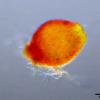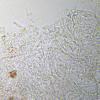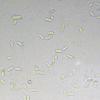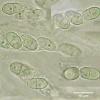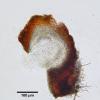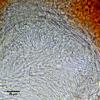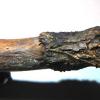
09-01-2026 17:41
Arnold BüschlenHallo, F. dilatata wird von vielen Bryoparasiten

09-01-2026 10:08
 Blasco Rafael
Blasco Rafael
Hola, en el mismo habitat que la anteriorRetamaDia

08-01-2026 21:22
 Blasco Rafael
Blasco Rafael
Hola, He recogido esta muestra de Orbilia sobre Re

07-01-2026 10:24
 Danny Newman
Danny Newman
Pezicula sp. on indet. hardwood Appalachian Highl

07-01-2026 22:22
 Danny Newman
Danny Newman
Tatraea sp. on indet. hardwood The Swag, Great Sm

07-01-2026 17:29
 Marc Detollenaere
Marc Detollenaere
Dear Forum,On a barkless Populus I found some smal

10-11-2021 17:33
 Riet van Oosten
Riet van Oosten
Add-on topic http://www.ascofrance.com/forum/7059

07-01-2026 10:05
 Danny Newman
Danny Newman
cf. Chaetospermum on XylariaCosby Campground, Grea

02-01-2026 17:43
MARICEL PATINOHi there, although I couldn't see the fruitbody, I
Nectria
Martin Bemmann,
12-04-2010 23:18
 Dear all,
Dear all,I have here a Nectria, unmature (no asci, no spores), fruiting on a decorticated twig of a decidous tree.
Maybe the white lumps are a hint which taxa can be expected?
Best regards,
Martin
Christian Lechat,
13-04-2010 05:15

Re:Nectria
Hi Martin,
your fungus resembles to the genus "Cosmospora" and the white sporodochia are maybe a Fusarium.
Would you have some microscopical illustrations?
Regards,
Christian
your fungus resembles to the genus "Cosmospora" and the white sporodochia are maybe a Fusarium.
Would you have some microscopical illustrations?
Regards,
Christian
Martin Bemmann,
14-04-2010 13:00
Martin Bemmann,
14-04-2010 13:04
Martin Bemmann,
14-04-2010 13:06
Christian Lechat,
14-04-2010 14:00

Re:Nectria
I Martin,
Anamorph on the substratum looks like an Acremonium, it would be correct for "Cosmospora" but I would like to see some conidiophores and phyalides with conidia to know if it is really an Acremonium. However, nothing proves that this anamorphe is in relation to your Cosmospora
Your fungus is immature, you should wait until it is mature to study it.
Besides, without anamorph in culture it is nearly impossible to know what it is.
Cheers,
Christian
Anamorph on the substratum looks like an Acremonium, it would be correct for "Cosmospora" but I would like to see some conidiophores and phyalides with conidia to know if it is really an Acremonium. However, nothing proves that this anamorphe is in relation to your Cosmospora
Your fungus is immature, you should wait until it is mature to study it.
Besides, without anamorph in culture it is nearly impossible to know what it is.
Cheers,
Christian
Martin Bemmann,
14-04-2010 23:48

Re:Nectria
Hi Christian,
your estimation was well done, regarding the separation of the anamorph and the unsolvable problem of the teleomorph.
I made a new preparation of these white lumps and it turned out to be something very different than the first one.This time a Fusarium, maybe.
As for the "Cosmospora" I will wait some time to look at it, not expecting to get a name for it, but just having seeing it at a mature stage
Best regards,
Martin
adding some pictures of the "Imperfect of the Day" ;-)
.
your estimation was well done, regarding the separation of the anamorph and the unsolvable problem of the teleomorph.
I made a new preparation of these white lumps and it turned out to be something very different than the first one.This time a Fusarium, maybe.
As for the "Cosmospora" I will wait some time to look at it, not expecting to get a name for it, but just having seeing it at a mature stage
Best regards,
Martin
adding some pictures of the "Imperfect of the Day" ;-)
.
Christian Lechat,
15-04-2010 06:58

Re:Nectria
Hi Martin,
I think this anamorph is a Cylindrocarpon / Neonectria . Could you please to send us an image of ascomatal wall in vertical section?
Christian
I think this anamorph is a Cylindrocarpon / Neonectria . Could you please to send us an image of ascomatal wall in vertical section?
Christian
Martin Bemmann,
15-04-2010 22:26
Martin Bemmann,
17-04-2010 00:15
Christian Lechat,
17-04-2010 13:45
Martin Bemmann,
17-04-2010 19:19

Re:Nectria
Thank you Christian!
At least one species excluded! I will wait now until I find mature free spores, before I proceed.
Why is N. ditissima=galligena? Both are valid species in Index Fungorum?
Best regards,
Martin
At least one species excluded! I will wait now until I find mature free spores, before I proceed.
Why is N. ditissima=galligena? Both are valid species in Index Fungorum?
Best regards,
Martin
Christian Lechat,
17-04-2010 21:16

Re:Nectria
Neonectria ditissima (Tul. & C. Tul.) Samuels & Rossman, Canadian journal of botany
2006, vol. 84, no9, pp. 1417-1433
= Cylindrocarpon willkommii (Lindau) Wollenw., (1928)
= Fusarium willkommii J. Lindau, in Rabenhorst
= Nectria ditissima var. arctica Wollenw., (1926)
= Nectria ditissima var. major Wollenw., (1926)
= Nectria major (Wollenw.) J. Moravec, (1956)
All the best,
Christian
2006, vol. 84, no9, pp. 1417-1433
= Cylindrocarpon willkommii (Lindau) Wollenw., (1928)
= Fusarium willkommii J. Lindau, in Rabenhorst
= Nectria ditissima var. arctica Wollenw., (1926)
= Nectria ditissima var. major Wollenw., (1926)
= Nectria major (Wollenw.) J. Moravec, (1956)
All the best,
Christian
Martin Bemmann,
17-04-2010 21:29

Re:Nectria
Ok, thanks again for directing me to the Castlebury/Rossman/Hyten paper.
I will study it.
Cheers,
Martin
I will study it.
Cheers,
Martin


